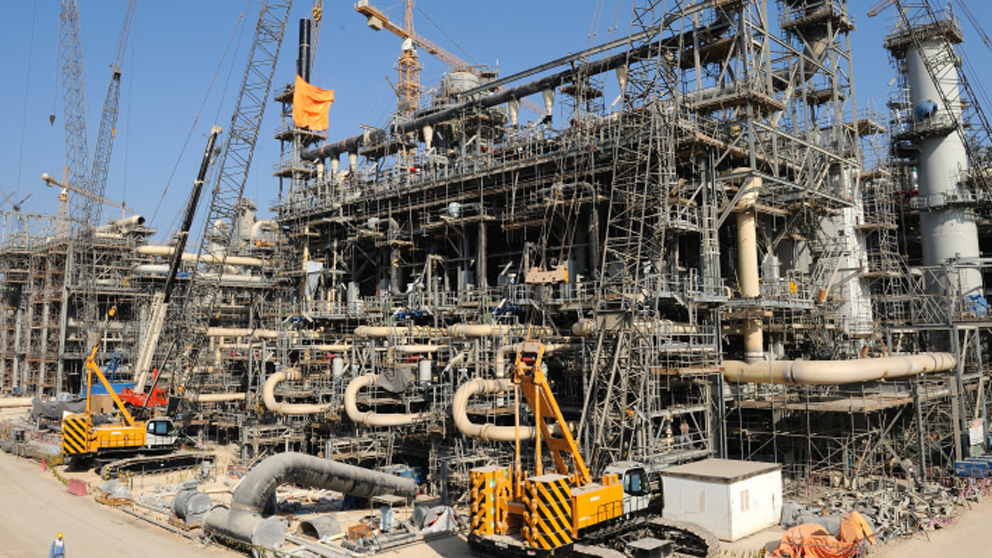Liquefied Natural Gas (LNG) facilities create a unique set of challenges for system designers because of the properties of natural gas. At room temperature, natural gas is in its gaseous state; in order to liquefy it for transportation and storage, facilities must cool it to approximately
-265ºF. Maintaining these temperatures is crucial to not only ensuring an optimized system that operates as efficiently as possible, but also ensuring that the LNG facility operates safely.
As with all materials, when LNG returns to its gaseous state, it increases greatly in volume. Since LNG is stored at its boiling temperature, any heat gained into the LNG system will boil off some of the LNG, returning it to its gaseous state. The facility will deal with the boiled off LNG by either re-condensing it, at great expense, using the onsite refrigeration system, or venting it to the atmosphere, which wastes valuable material and is environmentally harmful. If more heat is gained than can be removed by the refrigeration system, there is even potential for the system to become pressurized as the LNG vaporizes. Since the LNG handling system is not designed to withstand substantial amounts of pressure, this must be avoided at all costs. Thus, in order to keep an LNG system operating effectively and safely, it must be very well insulated to limit the heat gain to a level that is manageable for the facility.
Unlike high-temperature applications where heat loss typically results in a loss of process control and higher operating costs, in an LNG application, excessive heat gain can actually put the entire plant and surrounding communities at risk. This is why a well-designed insulation system is absolutely critical to ensuring safe and efficient operations in an LNG facility. Below, we’ve outlined the top four characteristics system designers should consider when selecting an LNG insulation material.
1. Thermal conductivity: As limiting heat gain into the LNG system is one of the crucial requirements in an LNG facility, the thermal performance/conductivity of the insulation is one of the most important features designers should consider when selecting an insulation material. The thermal conductivity of the insulation will determine how thick the insulation needs to be in order to effectively limit heat gain to the system. The insulation material type and the insulation’s standard thicknesses will determine how many layers of insulation are needed to achieve the necessary thermal performance. For example, JM’s polyisocyanurate insulation, TRYMER®, comes in thicknesses up to 3 inches and falls in the middle in terms of thermal performance when compared with other cryogenic insulations. By using TRYMER, the necessary thermal performance can be achieved in fewer layers than the least thermally conductive materials that come in thicknesses of 10mm maximum. At the same time, it still offers a lower total thickness than the more thermally conductive cryogenic insulation materials. This creates a unique situation where TRYMER PIR is often the most economical choice both in terms of material costs (including insulation, vapor retarder, and jacketing) and installation costs.
2. Water-Resistance: Given that the operating temperatures in LNG facilities are so incredibly low, ensuring water and water vapor do not infiltrate the system is critical. Liquid water is incredibly thermally conductive while frozen water expands, increasing the potential for damage to the tightly fitting insulation, jacketing, and vapor retarder, ultimately leading to large increases in heat gain into the LNG. For this reason, all insulations used in cryogenic applications require a properly installed vapor retarder (often times more than one) – even if the insulation is closed cell, like TRYMER PIR or cellular glass.
3. Ease of Fabrication: One of the crucial characteristics to ensuring an insulation system works successfully is fabricating it correctly to fit the pipe, fittings, and other pipe system components. One of the primary benefits of using a PIR insulation like TRYMER is that it is easy to fabricate correctly both in the fabrication shop and in the field. In fact, it’s so easy to fabricate, that in addition to being used for insulating purposes, TRYMER is also often used on movie sets where it is carved into various components for set backgrounds. In LNG applications, this fabricability can be a key differentiator that supports a tight fitting and successfully installed insulation system. In comparison, other insulation materials used in LNG applications are commonly known to be dusty and more difficult and costly to fabricate and install.
4. Compressive strength: Compressive strength comes into play when you consider the importance of ensuring the insulation system operates as designed. The great degree of caution needed to minimize heat gain into the LNG system means that it is crucial that the insulation maintains its thermal performance. This means that it must remain at its designed and specified thickness and shape so that it can maintain its thermal performance and help protect the vapor retarder from damage. As a result, many insulation system designers prefer to specify insulations with a higher compressive strength, like TRYMER PIR or cellular glass, to ensure that the insulation is strong enough to withstand the typical abuse it will experience throughout its lifetime.
Each of these features is important for insulation system designers to consider, and they help lead to a long service life for the insulation system. This has perhaps been demonstrated most frequently in LNG facilities throughout the world that originally used PIR insulation which has now been functioning successfully for over 20 years. However, it’s important to keep in mind that this article is only about the insulation, and insulation is just one component of a successful LNG insulation system. We’ll be discussing some of the other critical components in our upcoming webinar on April 29th, Insulation Systems for LNG Piping.

